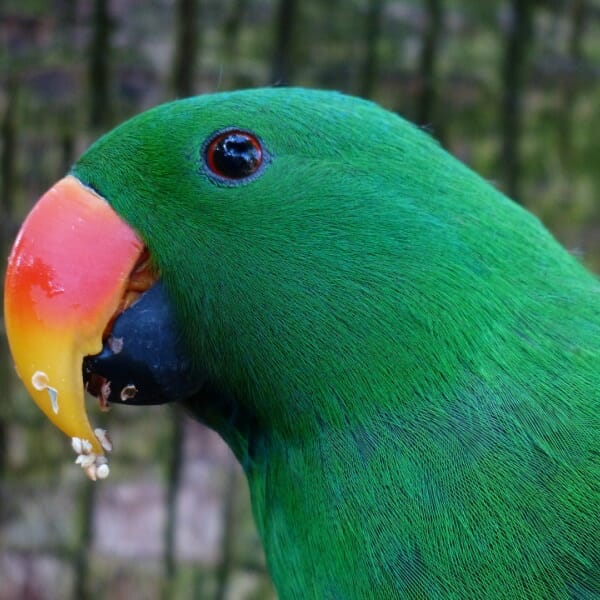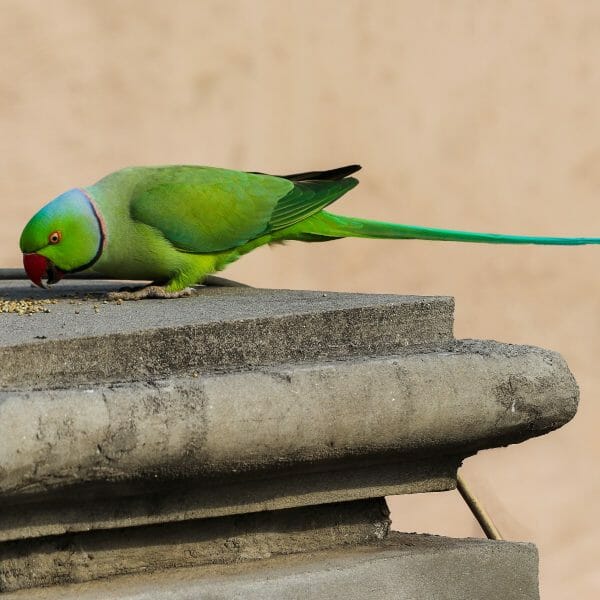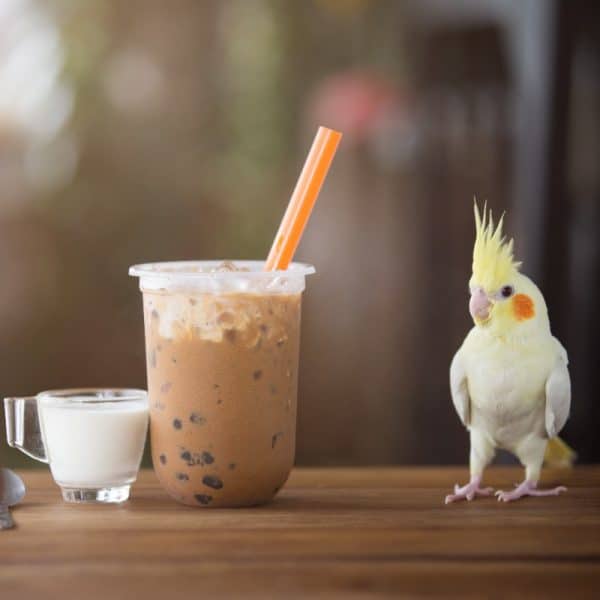Last Updated on by Mitch Rezman
A little housekeeping
This week at the Windy City Parrot where the sun never sets empire world headquarters, our two local wi-fi networks decided to freelance.
In the digital world, you can not tolerate freelancing networks so we went out and got one of those transformers-looking routers with lots of menacing antennas and fired it up.
Getting all of the computers to talk to all the printers talk took 10 hours of my time and several hours of Catherine speaking to a number of support reps from our shipping software company.
2 trips to Micro Center and a bag of returns and receipts, thus this week’s birdie brunch is a patchwork of information due to the 10 hours that were sucked out of my life by the universe this week. Damn you Windows 10.
We’ve all been there.
I have a 6 year old cockatiel who moulted again twice due to a second freeze we had.
This morning when I got her up she had a bloody spot on the bottom of her cage, it was the size of a silver dollar.
She had a tail feather that was messed up and like she was pulling on it. She did get it out and the bleeding stopped. Is there anything I could do if this happens again?
Thank you
Shirley
Hi Shirley
Your cockatiel has what are called blood feathers – new feathers grow during and after the molt, the feather shafts will contain blood.
It’s best to remove these broken blood feathers before they break further and your bird bleeds a lot as what has happened to yours.
It’s important to monitor your bird for these blood feathers and remove them to prevent additional bleeding that could possibly lead to loss of life.
MitchR
I’ve been watching, with interest, your updates on Popcorn’s health situation.
As a past cockatiel owner (we’ve had about 5 of them–one of which lived to be 30 years old!), I know how wonderful these birds are and I know you are concerned about her condition. Prayers for successful treatment and future health.
Since last week’s visit 4/1/16 to see Dr. Byron the abdominal swelling has gone down but she now has some sort of hernia like protrusion – very odd. Dr. Byron didn’t have an explanation so we’re just watching it.
Every couple of days I flip her over and gently feel it. She’s sensitive to such handling so I don’t spend a lot of time but I’m letting her out of her cage more.
Her flights around the apartment are getting longer – and she continues to do a lot of floor walking and foraging as cockatiels will do in the wild.
We don’t know if she’s going to be around two days or two years so in the meantime she gets all the millet she wants and lots of affection from the two of us.
Thank you for reaching out Carol.
She hasn’t lost her appetite.
Customer 1/4/2016 2:16:53 PM
Due to a divorce, I now have only four birds. A Quaker, BCC (Blue Crowned Conure), GCC (Green Cheek Conure) and a Love bird. (I had to re home a B&G and six Cockatiels, broke my heart) what do you recommend?
Right now I do give them a little seed at bedtime, get them through the night. (No sunflower seeds) pellets and Lafeber Nutraberries. They also get nuts and chop.
Any suggestions on what I should do differently? They are all near 20 except the lovebird is 4.
I want the best possible seed for bedtime.
Denise K
Hi Denise – I’m sorry for the loss of your birds – it sounds as though your nutritional program is on track – the only thing that I would suggest is leaving the pellets or the Nutriberries as the nighttime snacks instead of the seeds – kinda like me choosing between a cup of yogurt or a handful of sugar cookies before I go to bed.
MitchR
Does your “feel good” economy bulb help with d3 deficiency and what type of lamp do I need or does a normal household lamp work
Hi Marla
My first question will always be “have you determined that your bird has a D3 deficiency through a blood workup”?
Editors note: Unless you have access to university class veterinary services, it’s (almost) impossible to test a bird for Vitamin D3 Endnote
It’s really best to rely on food and supplements, not the quality of added light to modify a bird’s metabolism.
Any of the lights we offer will make your bird feel good and they should be placed on timers especially during the winter months when the days grow shorter which is very stressful on caged birds I write about this in detail here.
MitchR
Happy the Eclectus – talking in the car (I wasn’t the driver)
Ok, So I read your rant on chop and other fresh foods and I get that Hagen and Lafebers mixes are good. Well, I have an Eclectus and I am driving myself mad (not to mention breaking the bank) trying to feed properly.
Everything I read, and there have been lots of things, all say I must feed him mostly fresh veggies and lots of fruit. He won’t eat enough of that to stay alive. So what am I to do? What do you recommend? He bites his feathers off, he has too much fat in his blood, he seems happy and is very much loved and socialized with me and my daughter.
He is out of his cage most of the day. I’m going nuts and very broke trying to find what to feed him that is actually good for him and that he wants to eat.
Thanks
Janice Mills
In order to stabilize your bird’s nutritional situation I’m going to recommend that you start with the Volkman seed/fruit/veggie blend developed specifically for Eclectus parrots – it has no added vitamins nor supplement enhancements – making it ideal for your bird.
Talkative Eclectus
If she accepts this diet we can talk about moving into introducing fresh fruits and vegetables.
MitchR
Approved by Catherine Tobsing
Your zygodactyl footnote
Milo the Eclectus Parrot – Sexy and he knows it.
Author Profile
Latest entries
 Bird BehaviorJune 13, 2025Why Do Some Parrots Struggle in Captivity?
Bird BehaviorJune 13, 2025Why Do Some Parrots Struggle in Captivity?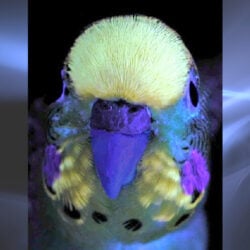 Bird & Parrot AnatomyJune 12, 2025Why are Budgerigars Called The Colorful Parrots?
Bird & Parrot AnatomyJune 12, 2025Why are Budgerigars Called The Colorful Parrots?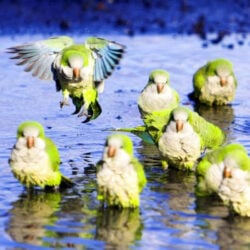 Bird & Parrot AnatomyJune 12, 2025How Do Monk Parakeets Talk to Each Other?
Bird & Parrot AnatomyJune 12, 2025How Do Monk Parakeets Talk to Each Other? 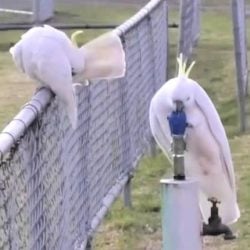 Bird BehaviorJune 10, 2025How Cockatoos Learned to Use Drinking Fountains Like People
Bird BehaviorJune 10, 2025How Cockatoos Learned to Use Drinking Fountains Like People
